The calm setting of the rocky hills surrounding the Agastya Tirtha at once takes you a few centuries back when this was the flourishing capital of the Chalukya kingdom. The ancient cave temples and the other temple complex in the Malprabha river valley here are recognized as the UNESCO World Heritage Site under the category of “Evolution of Temple Architecture – Aihole-Badami-Pattadakal”. Let me take you through this city that was once known as Vatapi – the centre of temple architecture of the Chalukya dynasty.
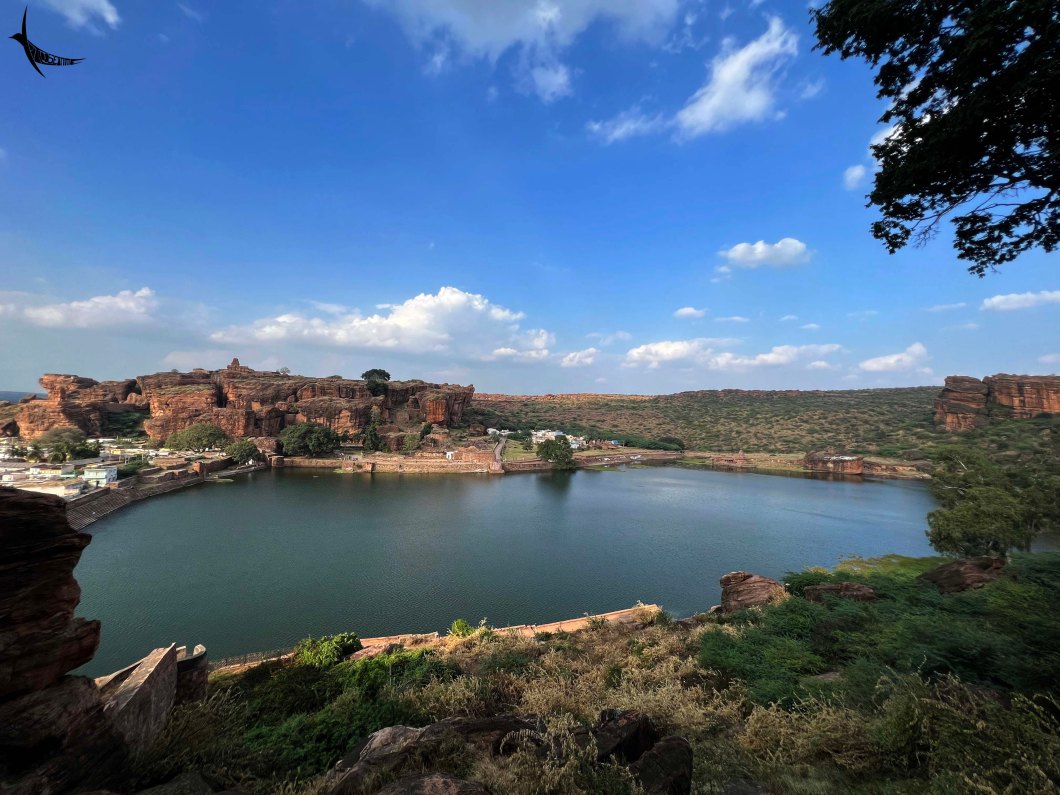
Agastya Tirtha with Badami fort
I begin my post with an honest confession. I always wanted to visit Badami as it was the intriguing pictures that got me hooked (sorry but it was not the history.) A perfect blend of geographical features in the backdrop and amazing ancient architecture makes it an immensely sought after destination. It is also the legend associated with the demonic name of the city that arouses even more of an interest.
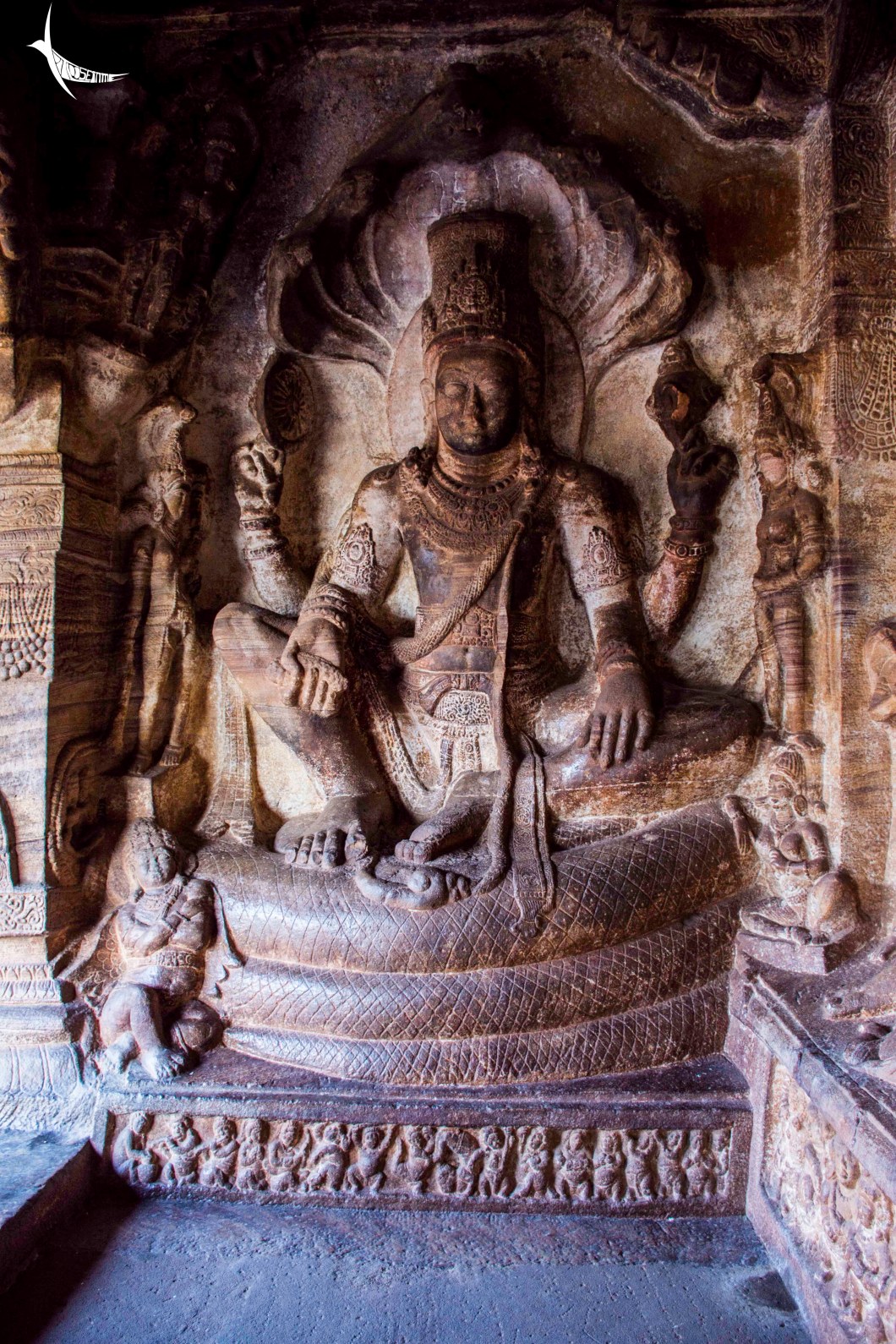
Carving of Vishnu in Cave 3
The legend is after the demon Vatapi and his brother Ilava. Vatapi the demon used to disguise himself as a goat and Ilava used to cook him and serve it to people. Then Vatapi would reassemble inside and burst out of the stomach killing the locals. In this way, the brothers used to trick the locals to eat the goat meat and eventually die. The great sage Agaysta was known to have great digestive power he arrived here to save the people from the demon brothers. Ilava offered the goat (disguised Vatapi) to Agastya that he ate and digested immediately. Thus Agastya saved the locals, killing Vatapi and his brother Ilava. After this legend, the place came to be known as Vatapi and the lake as Agastya Lake.
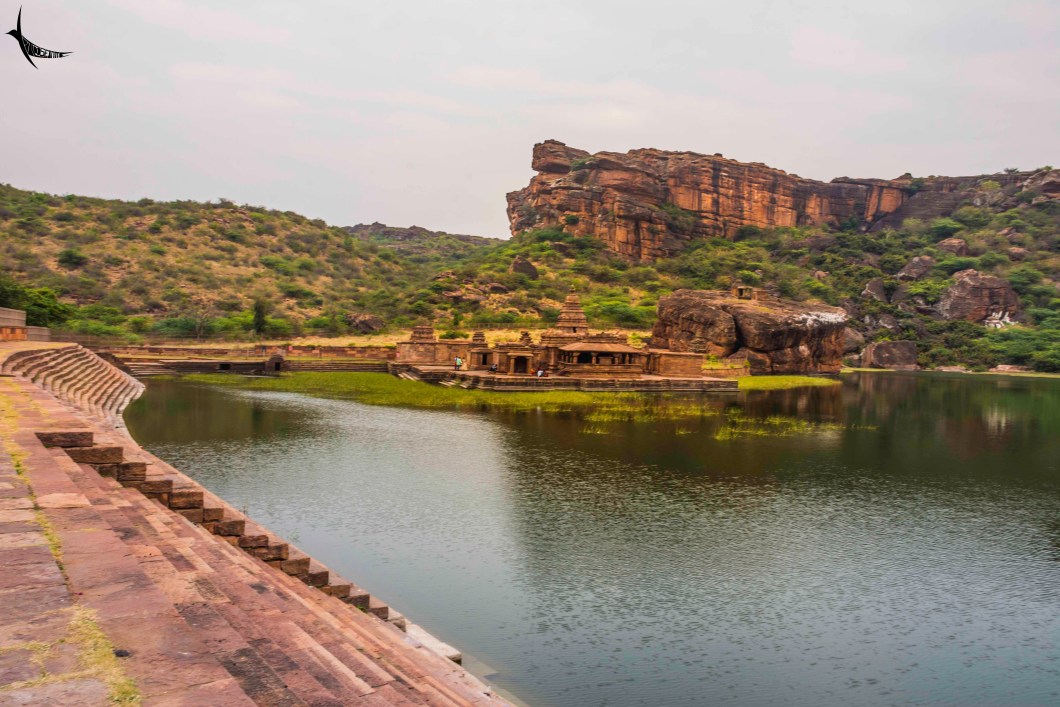
Bhutanatha temple with the Agastya Lake
Finally, we sealed the deal and not waiting any more we were off to Badami. Pune to Badami was a pretty long drive. The drive was mostly smooth other than some patches of the Karnataka State Highway that were not in very good conditions. But the best part of our drive was the time that coincided with the sugarcane season and the route seemed to pass through the sugarcane territory. This is probably the best part of any road journey, the rural scenery changes with the season and offers different views in each.
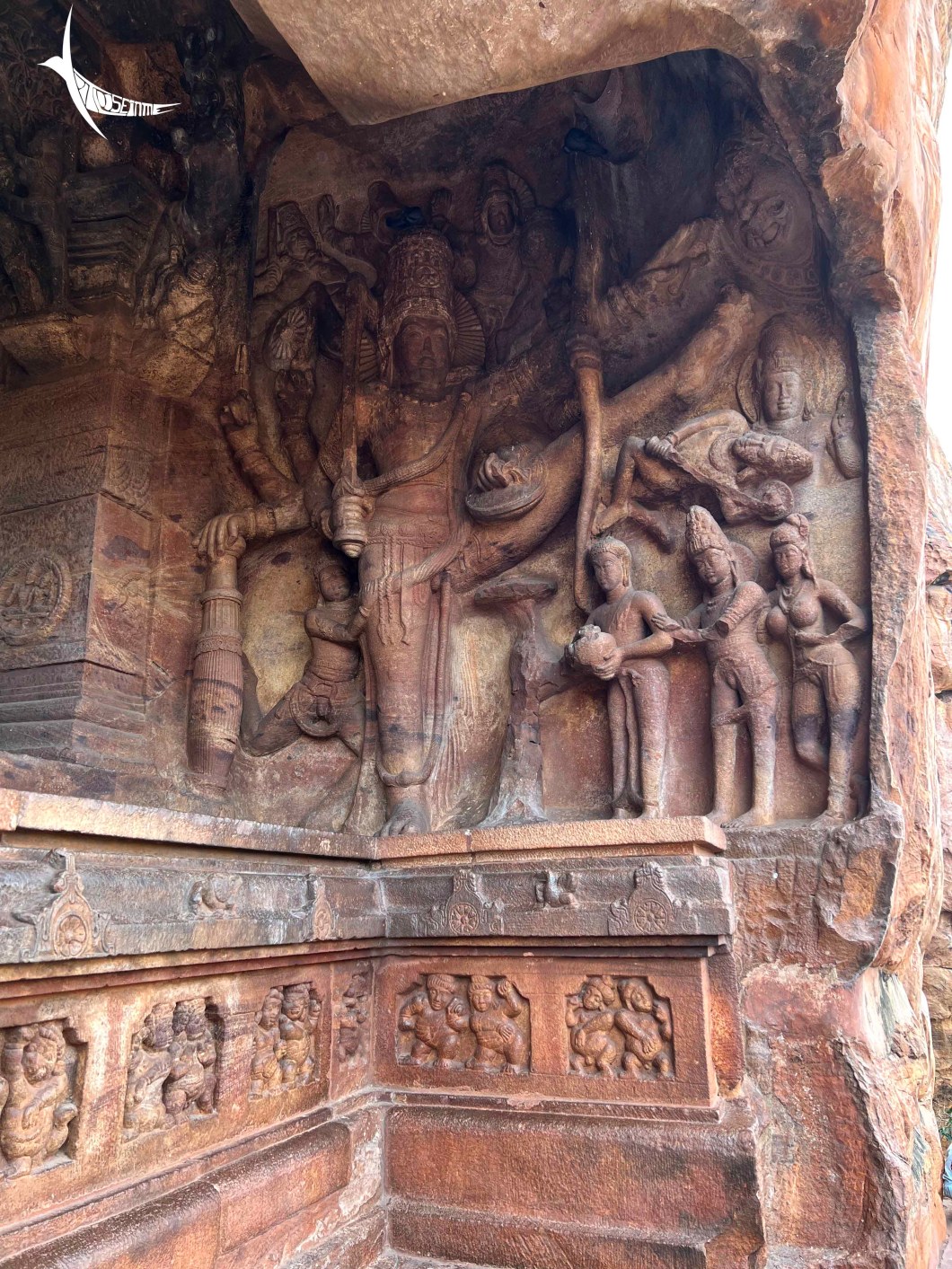
Vishnu in Vamana Avatar legend
On either side of the road, you see fields where feathery sugarcane arrows (sugarcane inflorescence) wave in the breeze. It was a spectacular sight to behold. We also passed by a couple of sugar factories outside which hundreds of sugarcane tractors waited to unload the harvest. It was a happy sight with a feeling of plentifulness everywhere. The only pain was the trail of tractors carrying the heavy load of the harvest. They were moving at a snail’s pace occupying a major part of the road and thus slowing the highway traffic.
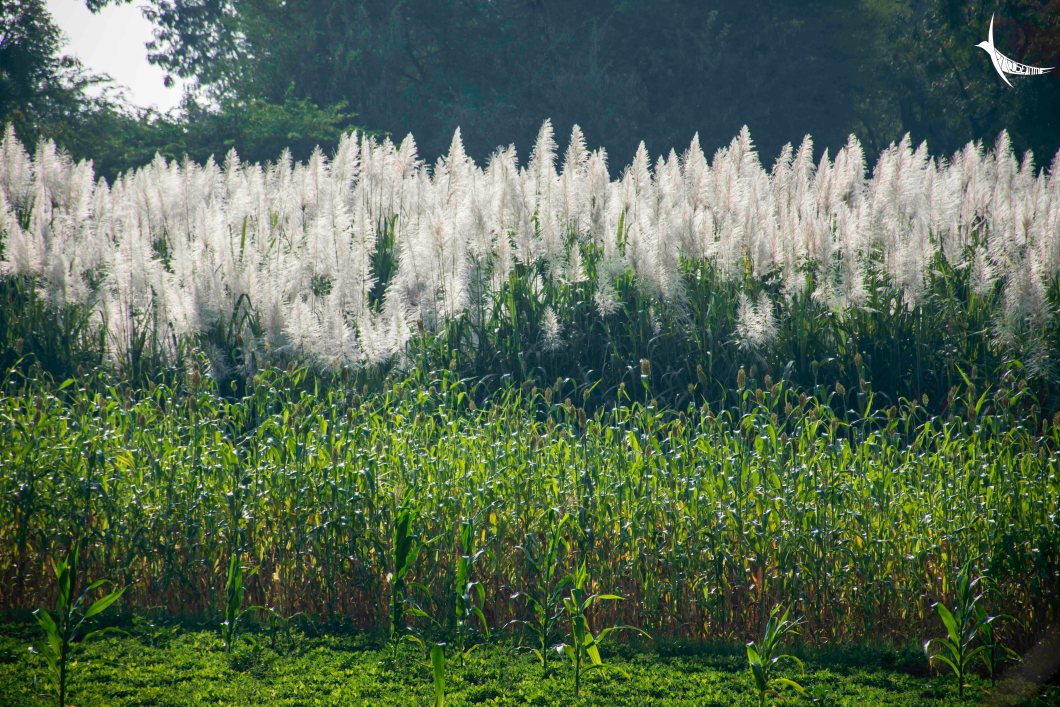
Sugarcane arrows
As we approached Badami, there was something even more interesting that lightened the mood. Fields of Sunflowers in full bloom – large bright yellow flowers all smiling at the Sun. We stopped near one to capture the pretty fields dressed in vibrant hues to entice travellers. Passing by many such fields we reached our stay in Badami which was just two kilometres from the city centre.
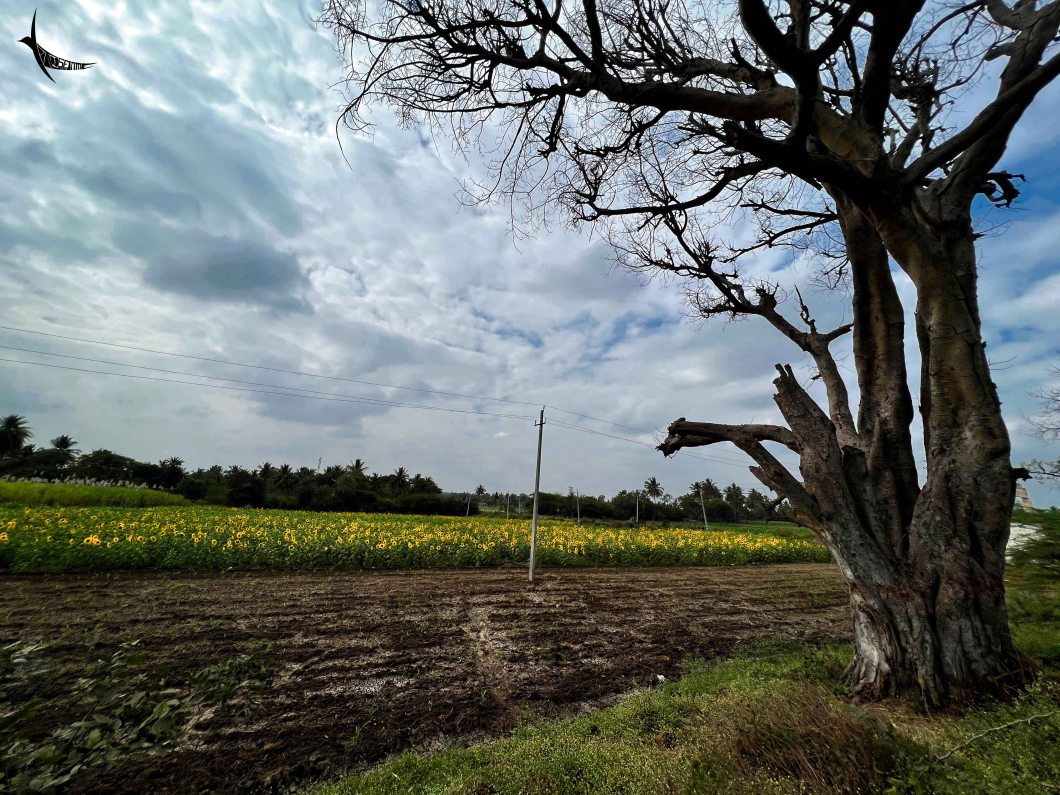
Sunflower field
Badami, Pattakadal and Aihole are linked with the common chain of ancient temple architecture. These places are also famous for the magnificent temple complexes built by the Chalukyas in later phases of their rule. I would prefer to cover the Aihole and the Pattadakal part in a separate post and focus only on Badami in this post.
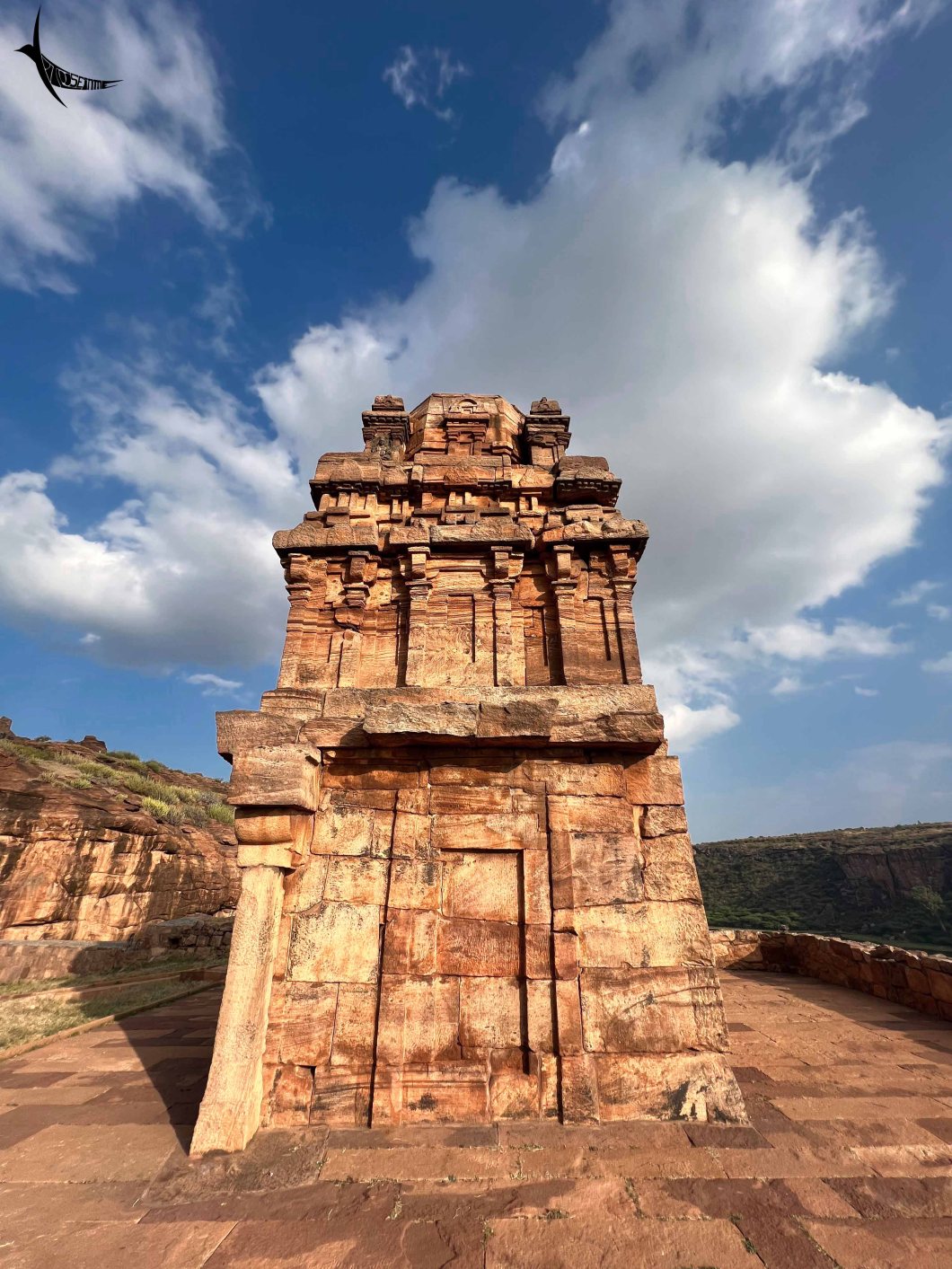
Temple in the Badami fort
Our peaceful stay in Badami was just out of the busy clumsy town, overlooking farmland beside the highway. We checked in at our stay and quickly finished a late lunch and then went on to catch a glimpse of a part of the historical city of Badami. The town of Badami seemed to be chaotic and it was utterly repulsive to drive through the extremely narrow lanes within the busy and disorganised locality to reach the Agastya Tirtha.

Badami fort
We wanted to make the most of the day by getting an idea of the place that we would explore the next day. Struggling through this maze of narrow lanes (for a short distance) we reached the calm surrounding of the Agastya lake. Nestled within the rugged red sandstone hills with the fort and the cave on either side, the Bhutanatha group of temples sits on the eastern side of the man-made Agastya lake in between. A stark contrast in the scene – an unorganised unkempt neighbourhood leading to a vast open space, a window to the past that reveals the beautiful topography guarding the magnificent creations.

View from the fort
As we loitered by the lake, a small boy approached us to be our guide through the remains of this historical site. We were quite amused by this adorable kid’s confidence in narrating the history of the place. We did not intend to take a tour of the site then as the overcast sky gave an impression of early sunset and a hint towards the approaching darkness so we gently said no to the little guide. We walked to the Bhutanatha group of temples through the stepped ghats by the lake.
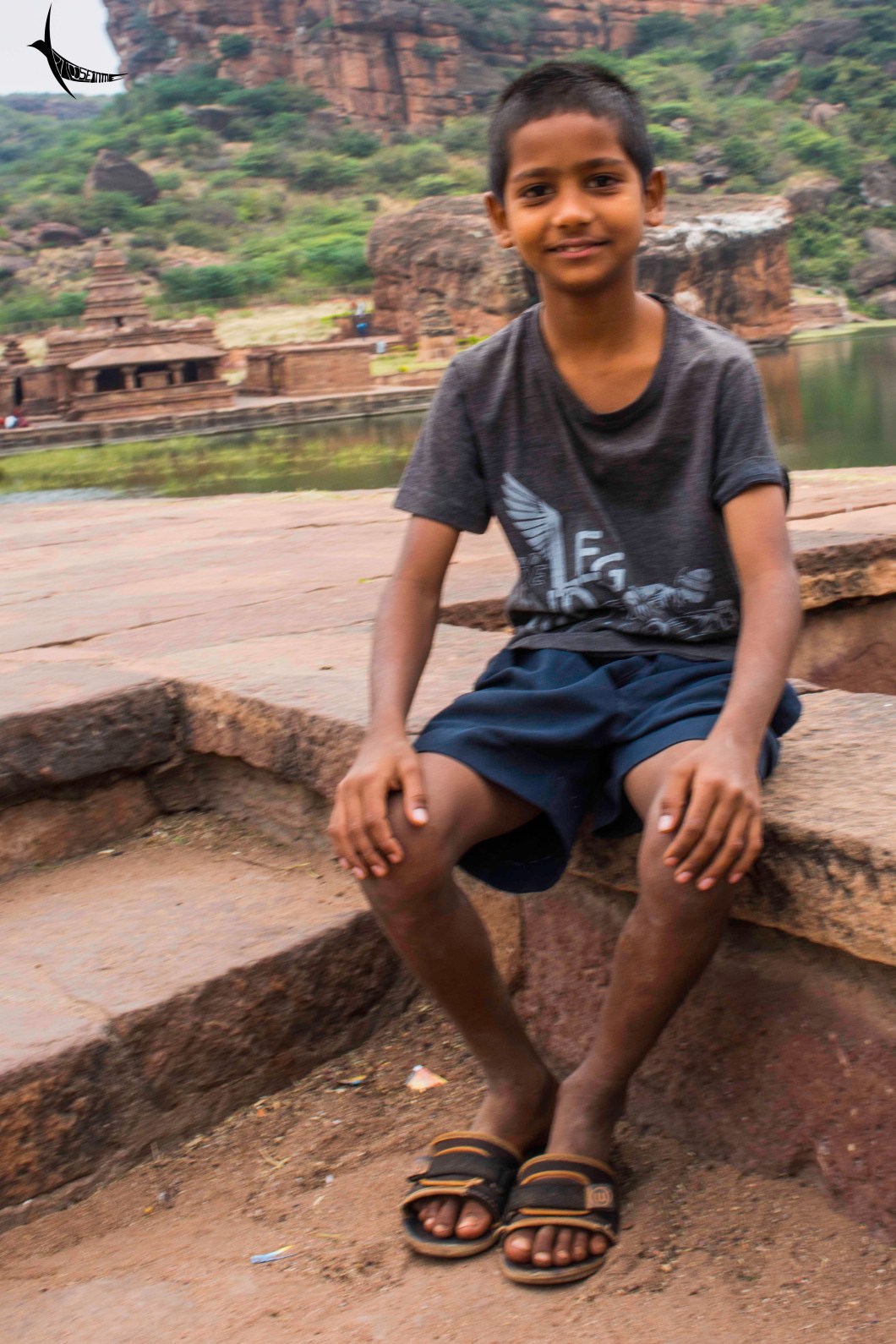
The little guide – Darshan Singh
The Bhutanatha group of temples has two subgroups, the main group built during the 7th – 8th century lies on the eastern side of the lake while the other group known as the north Bhutanatha group or the Mallikarjuna group was built later during the 11th – 12th century. These two subgroups of temples belonging to two different eras of the Chalukya dynasty depicts two different styles of architecture – the main and the older group on the eastern side portrays Badami Chalukya architecture and the northern group shows Kalyani Chalukya architecture.
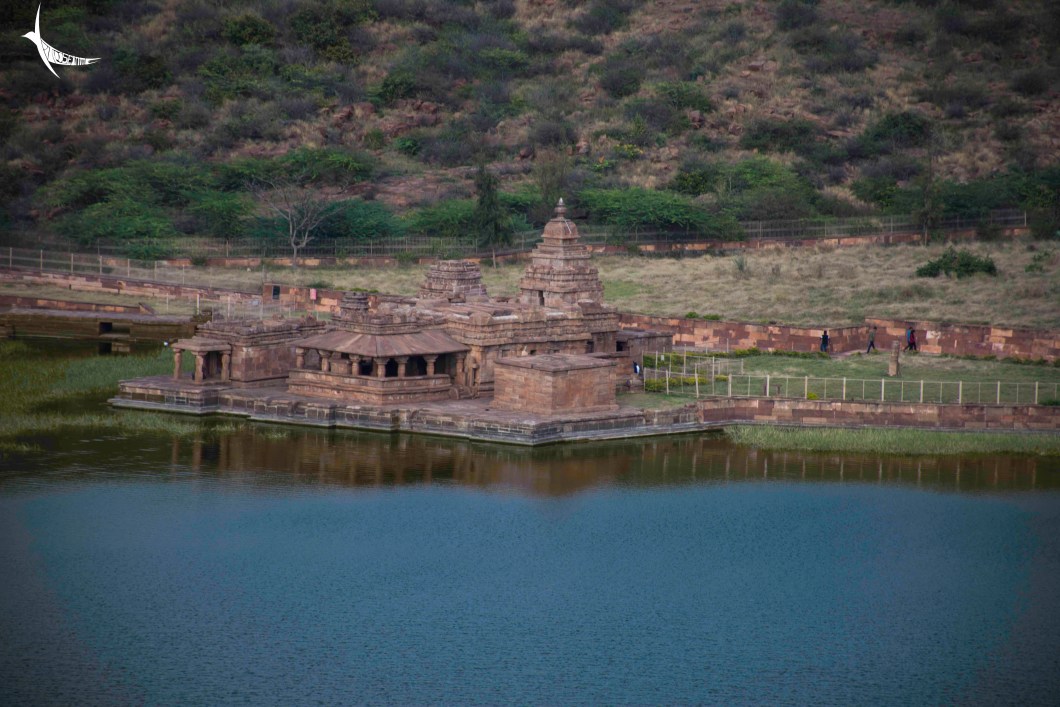
Main Bhutanatha group of temples
A serene environment prevailed as the calm waters of the lake reflected the group of temples on the foothills of the rugged red sandstone cliff with patches of green outgrowth giving a lovely contrast. We walked around the temples to reach the back from where the ascend gradually begins. With the dusk approaching and a handful of locals around it was a peaceful place to sit and watch the carvings of various deities on the monoliths unfolding the stories from the past.
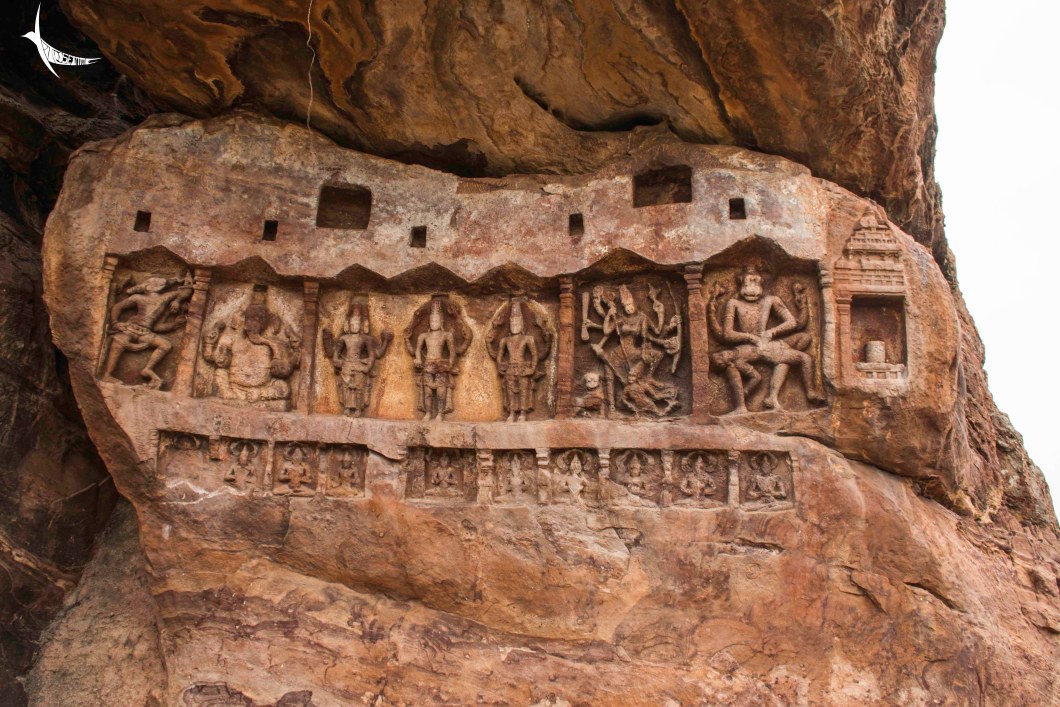
Carvings on a boulder behind Bhutanatha temple
We again braved those narrow roads to get out of the maze and return back to our hotel. The next day our plan was to explore the Badami cave and the fort and also the Mahakuta group of temples, Pattadakal and Aihole. As I mentioned earlier the Mahakuta, Pattadakal and Aihole will come in a separate post so let me come back to the Badami part. We visited the other three places in the morning and post-lunch we decided to visit the Badami caves first and then climb the fort and return back at sunset.
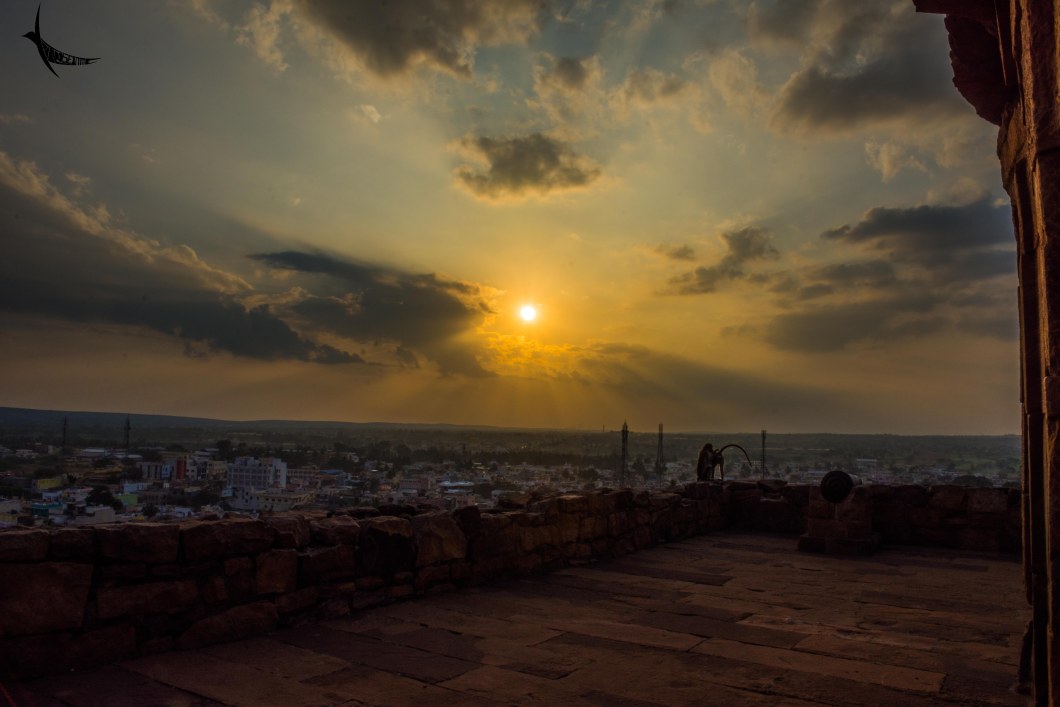
Watching the sun gliding down from the fort overlooking the busy city
The Chalukya dynasty ruled the southern and some parts of central India from the 6th to 12th century. Within this period they ruled as three different dynasties originating from the same Badami Chalukya eventually being separately known as Eastern Chalukya (or Chalukyas of Vengi) and the Western Chalukya (or Chalukyas of Kalyani) dynasties. The Chalukya dynasty was established in Badami in CE 543 by Pulakeshin I, which rose to prominence during the reign of Pulakeshin II. Smaller kingdoms of South India entered into alliances to come under the larger empires and thus a major part came under the dominance of Badami Chalukya.

Badami with its topographical feature of rugged sandstone hills on three sides offered a strategic location for the capital city of the empire. Kirtivarman I and Mangalesha, the sons of Pulakeshin I are credited for the construction of the Badami caves in the 6th century on the Southern side of the hill. The man-made Agastya Lake was constructed in the 7th-century to meet the water requirements of the capital. Gradually various Hindu temples were constructed around this lake. Badami under the Chalukyas emerged as the centre of art and temple architecture. Kirtivarman I had three sons – Pulakeshin II, Vishnuvardhana and Buddhavarasa. Pulakeshin II ruled Vatapi from CE 610 to 642 during which the early Chalukya dynasty reached its golden heights.

Huge cliffs on either side of the passage to the fort
The Badami Cave temple complex consists of four man-made caves. The caves were carved out of the sandstone hills joined by steep stairs and adjoining terraces overlooking the Agastya tirtha. The caves, in general, had a common plan with an entrance verandah (Mukha Mandapa) supported by stone columns and brackets leading to the pillared main hall (Maha Mandapa) with the small square shrine (Garba Griha) at the end of the cave and are numbers in ascending order.
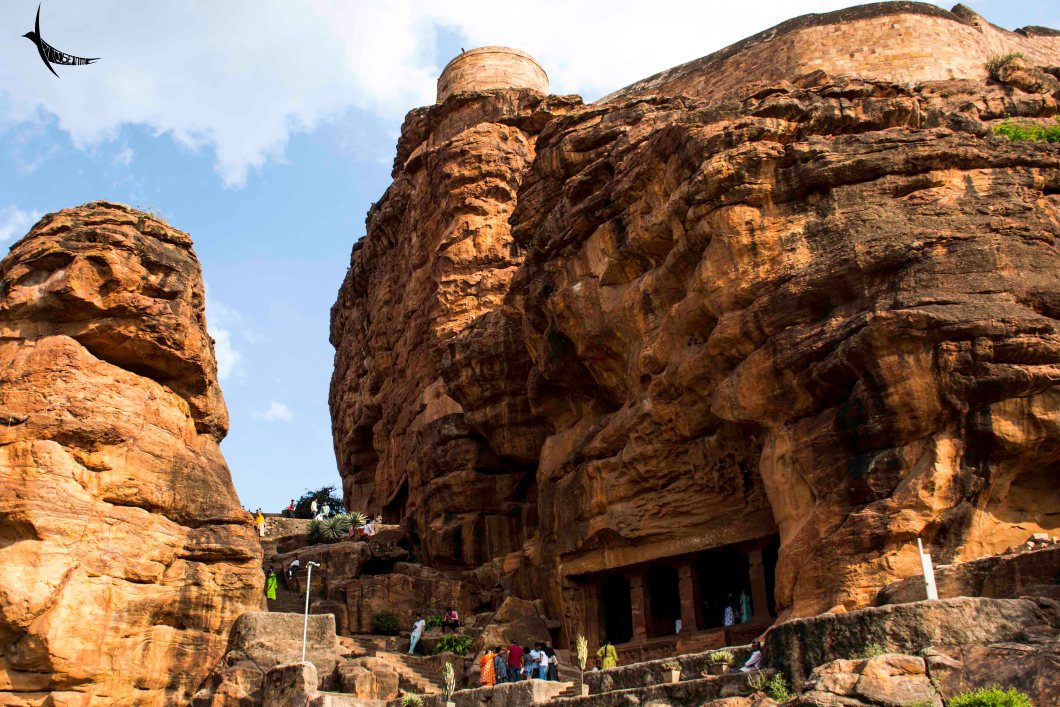
Badami cave complex – Cave I with the steps leading to the caves above
Cave I was created around CE 550 and dedicated to Lord Shiva. There are predominant carvings of 18 handed Nataraja in tandava, Goddess Durga as Mahishasuramardini, Ardhanarishwar and other Vidyadhar couples and Nagaraja. On the facade of the cave, there are signatures of craftsmen such as Aychaswami-Kalkutti. Cave II was carved during the 6th century and is dedicated to Lord Vishnu. This cave contains the reliefs of Lord Vishnu, Brahma, Goddess Durga, Kartikeya and others. Various scenes from the mythological Samudra-Manthan and other exploits of Krishna are also engraved here. Here the signatures of craftsmen found were ‘Vachya, Buru and Duttoja’.
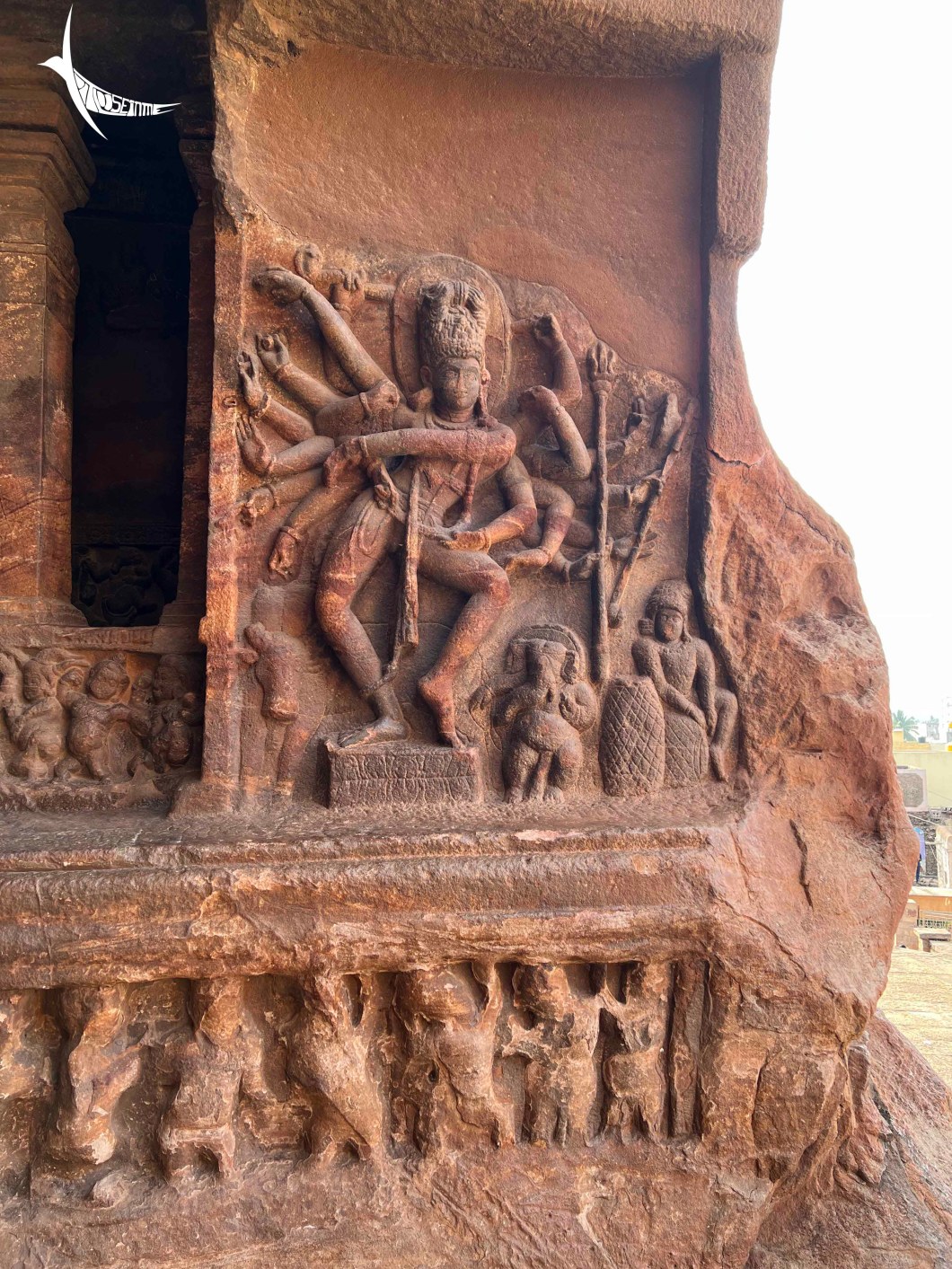
Nataraja in Cave I
Cave 3 is also dedicated to Lord Vishnu and was carved in CE 578 during the reign of Kirtivarman I, under the supervision of his brother Mangalesha. Few fresco paintings still remain visible in this cave that stood the test of time. This cave was considered the earliest dated Hindu temple in the Deccan region. Sculptures of Vishnu in various avatars are seen here. Cave 4 is the smallest of all the caves in this cave complex that was built in the early 7th century and is a Jain temple. Relief sculptures of Bahubali and Parsvanatha in penance are seen here.
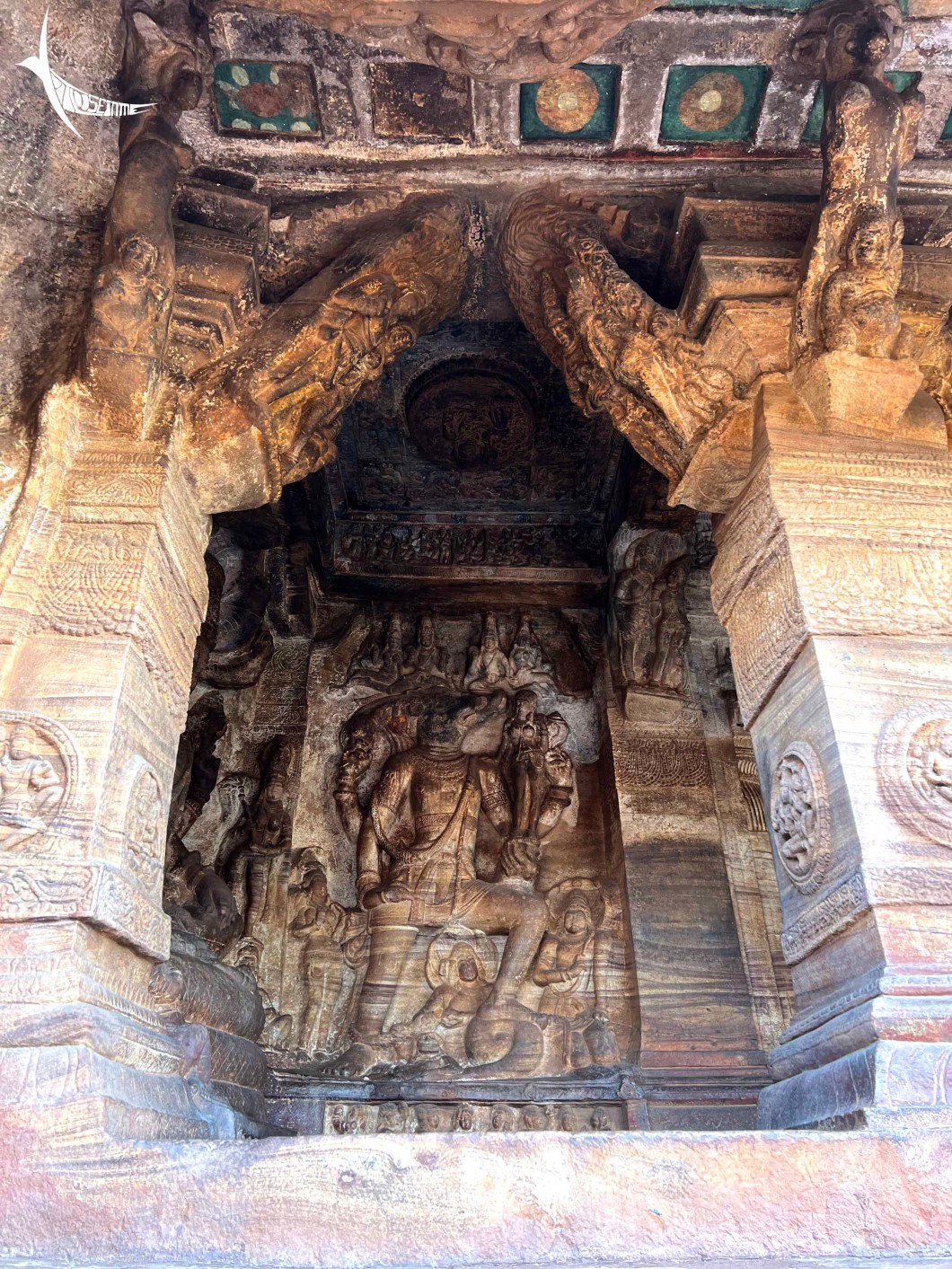
Vishnu as Varaha Avatar with paintings above
The terrace of the caves provides an amazing view of the Agastya tirtha and the fort on the other side of it. After exploring the cave complex we made our way through the maze again brushing our vehicle against a parked bike to reach the Archeological museum near the Agastya tirtha, our previous day spot. This time we went through the steps beside the Archeological museum to climb to the fort. The steps took us through some interesting alleys within the huge sandstone cliffs making the place look mysteriously beautiful.
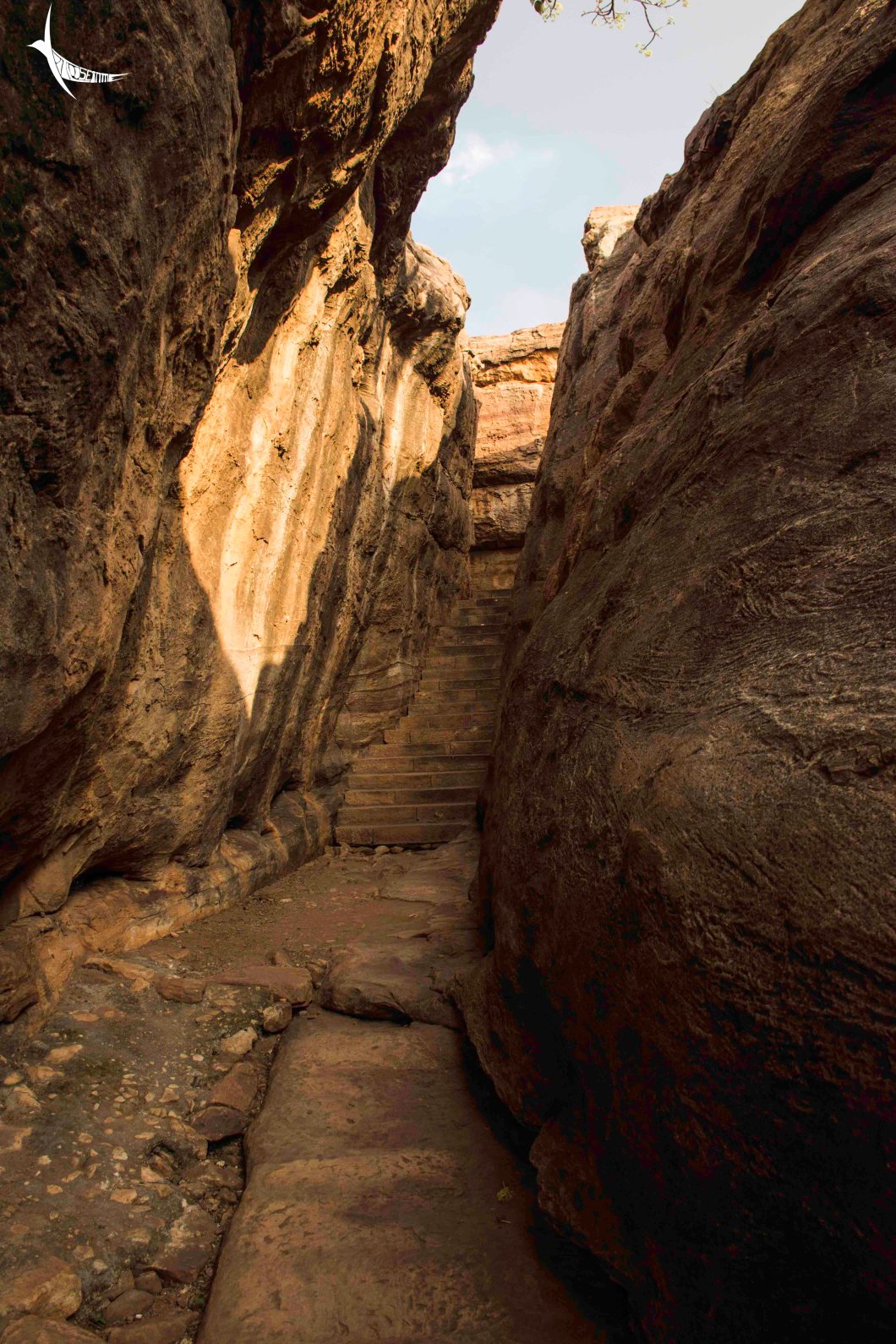
Climbing the fort
There are two parts of the fort in the northern and southern cliffs of Agastya Lake. We were climbing the one on the Northern side. This part comprises of two Shivalaya – lower and upper and a few temples and a couple of granaries and watch tower with canons. Records show the fortification of the hills were done in CE 544 by Pulakeshin I. Later it flourished during the reign of Pulakeshin II which lasted until his death in CE 642 (‘the great hero’ was presumed to have died fighting the Pallavas).
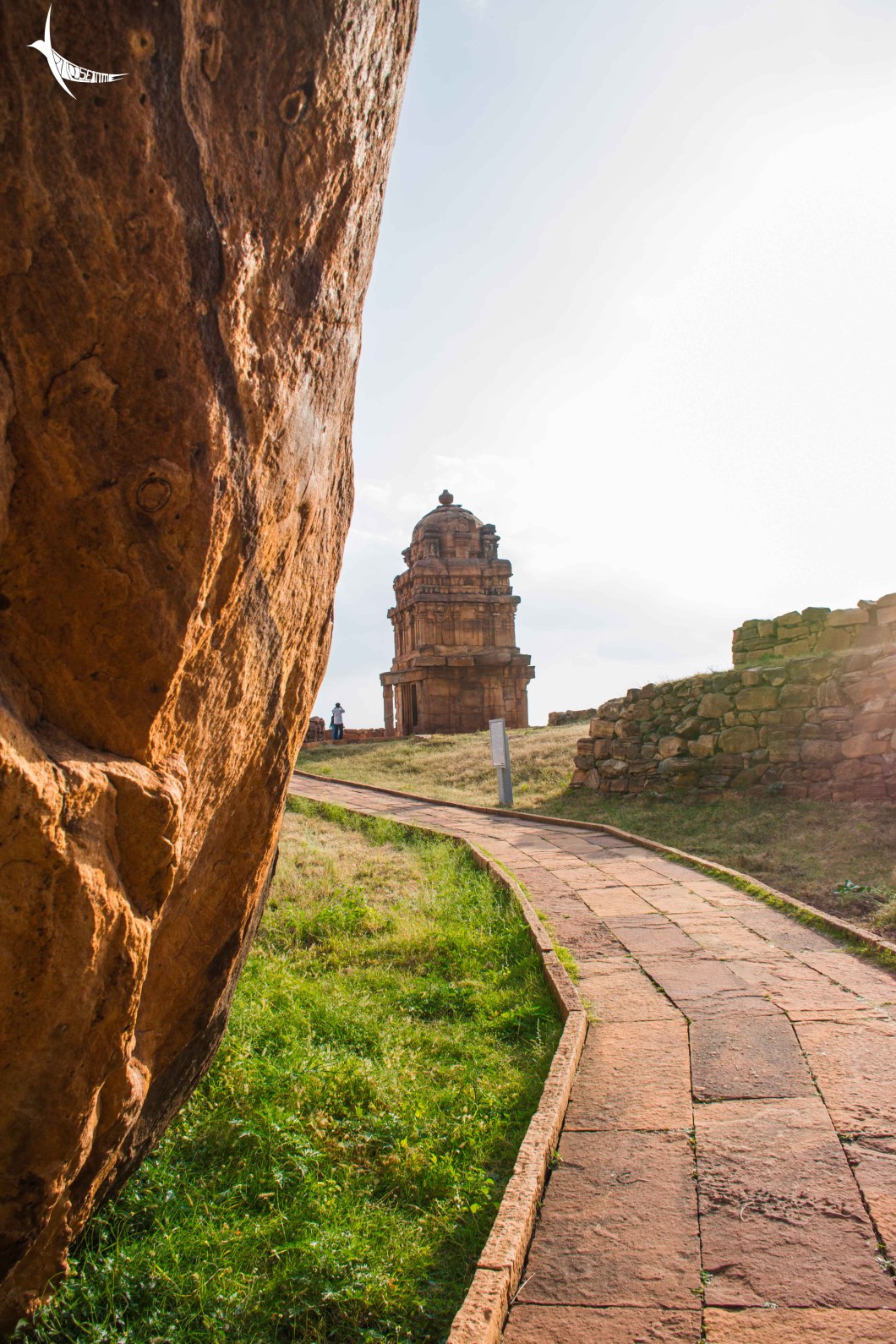
Lower Shivalaya
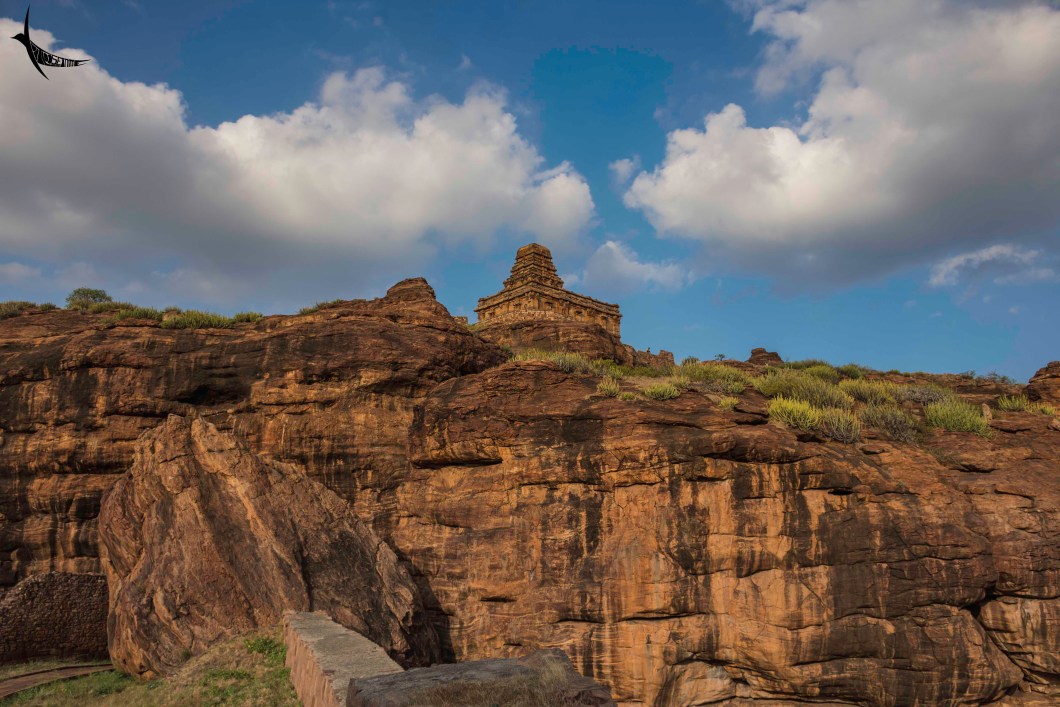
Upper Shivalaya
The fort now seemed to be under the rule of the macaques. Every single site was occupied by different groups. Although it was fun to watch their acrobatic activities at times they were close enough to encroach your personal space. “Once bitten twice shy” was my condition, as I already had many close encounters with these primates and most of them were not so pleasing. We did not wait to watch the sunset from the lower Shivalaya as a group of macaques had already taken over the control of the area as the sun was slowly gliding down.
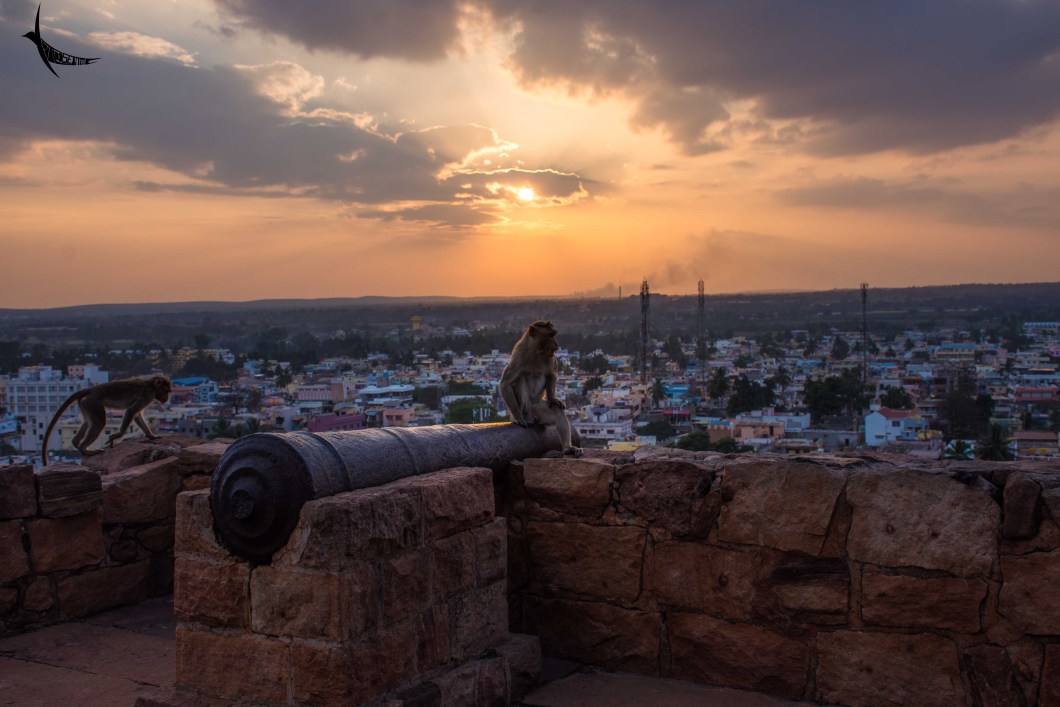
Master of the canon, present ruler of the fort
Thus, ending our Badami journey we were on the road back home, this time our friend Google Maps showed us a different route, following which we got the opportunity to see the beautiful 3km long Korthi-Kolhar bridge on river Krishna. It is the longest river bridge in Karnataka. After this exciting part, the rest of the journey was plain with a little excitement added by the grapevines on either side of the village road that this route took us through.
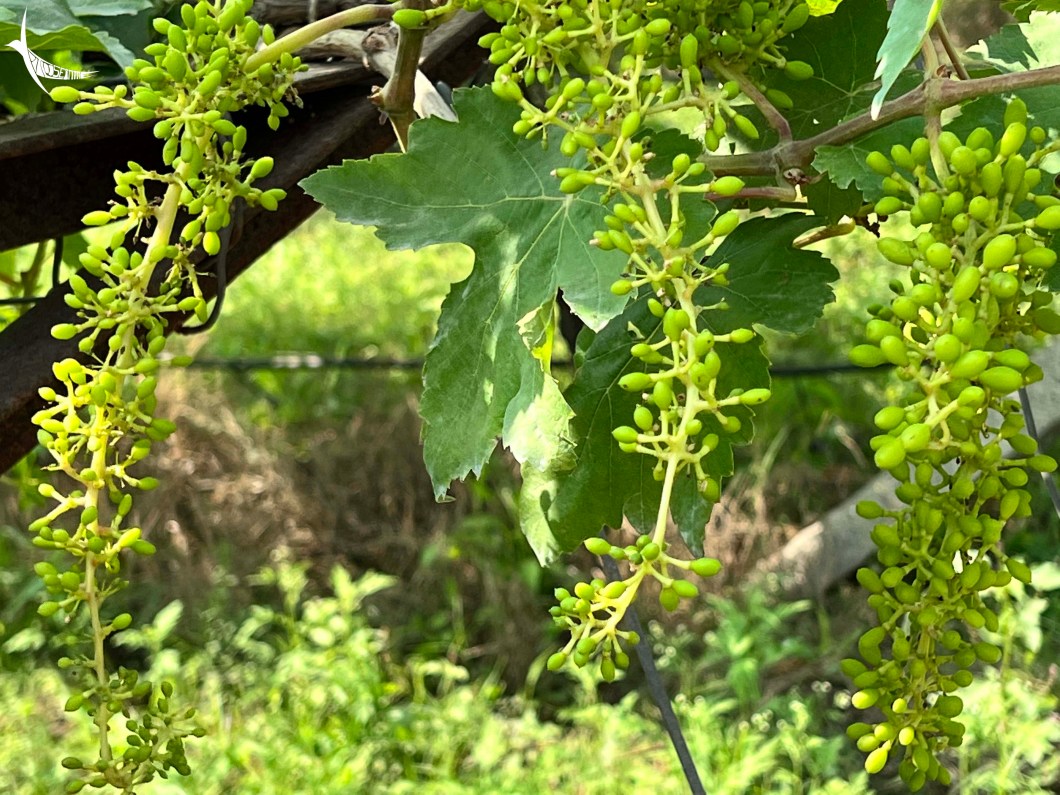
Can you identify the fruits?

Read more about the nearby Hampi.
Read about birdwatching in Hampi.